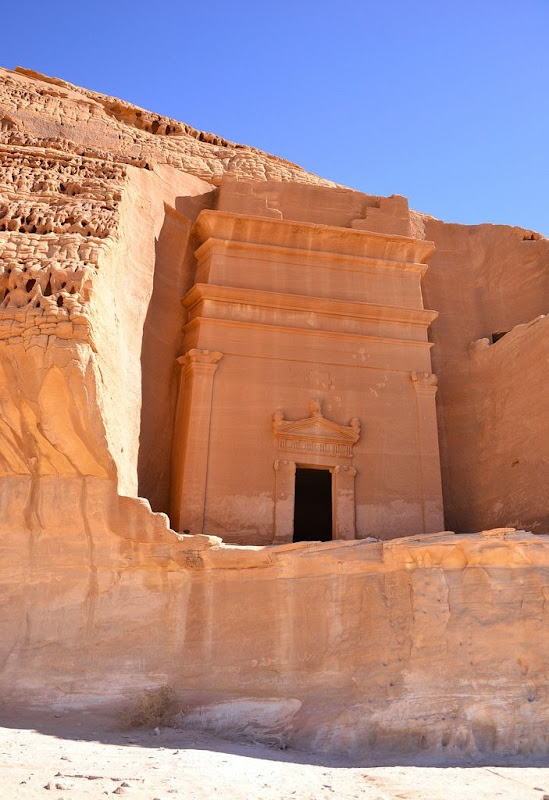Madain Saleh is a pre-Islamic archaeological site located in the Al-Ula sector, within the Al Madinah Region of Saudi Arabia, approximately 400km north-west of Madinah. Formerly known as Hegra it is the largest conserved site of the civilization of the Nabataeans south of Petra in Jordan. The site features 131 massive rock cut tombs with decorated facades, many with inscribed Nabatean epigraphs, spread out over 13.4 km and dating from the 1st century BC to the 1st century AD. Madain Saleh is an outstanding example of the Nabataeans’ architectural accomplishment and hydraulic expertise.
At its peak, the Nabataean kingdom stretched from its capital Petra in what is now Jordan deep into the Arabian Peninsula. It controlled vast arid and semi-arid expanses, and drew its wealth by trading incense, spices and aromatic plants. Madin Saleh reached its peak as the major staging post on the main north–south trade route.
After the Romans took over Nabatean Kingdom in 106 AD, they shifted the trading route from the overland north–south axis on the Arabian Peninsula to the maritime route through the Red Sea. Thus, Hegra as a center of trade began to decline, leading to its abandonment and disuse.
The history of Hegra from the decline of the Roman Empire until the emergence of Islam remains mostly unknown, as it was only sporadically mentioned by travelers and pilgrims making their way to Mecca. However, Hegra did served as a station along the religious route, providing supplies and water for pilgrims. A 14-century description made by celebrated traveler Ibn Battuta tells about the magnificent red stone-cut tombs of Hegra but makes no mention of human activities.
The Nabatean kingdom was not just situated at the crossroad of trade but also of culture. This is reflected in the varying motifs of the facade decorations, borrowing stylistic elements from Assyria, Phoenicia, Egypt and Hellenistic Alexandria, combined with the native artistic style. Roman decorations and Latin scripts also figured on the troglodytic tombs when the territory was annexed by the Roman Empire. In contrast to the elaborate exteriors, the interiors of the rock-cut structures are severe and plain.
Madain Saleh is officially protected as an archaeological site since 1972, for its tourism potential. In 2008, for its well-preserved remains from late antiquity, especially the 131 rock-cut monumental tombs, with their elaborately ornamented facades, of the Nabatean kingdom, UNESCO proclaimed Mada'in Saleh as a site of patrimony, becoming Saudi Arabia's first World Heritage Site.






















Comments
Post a Comment